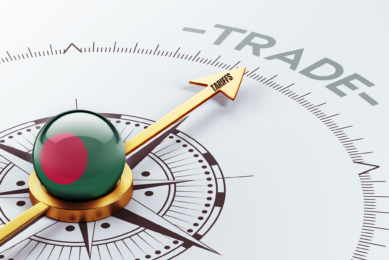African regional market for animal feeds grows
Animal feed markets in sub-Saharan Africa are growing. Feed is much demanded but supply is short as farmers try to add value to local commodities by turning them into compound feed.
Ugandan farmers have been grappling with low prices of commodities like maize for some time now. The prices for maize have dropped in some places to as low as Shs100 (app. € 0.032) a kilo which is more of an insult to the labour and inputs that farmers invest in these ventures.
This is the same as in other East African countries that have witnessed similar harvests and slump in prices. So it may not be wise to think of exporting raw maize to any of the regional markets presently.
However by contrast, the market for animal feeds (by-products of maize processing) in the region is thriving.
Comparative advantage
Uganda has a comparative advantage over other regional countries in the production of raw materials for animal feeds.
The population of the East African countries stands at over 120 million and is still growing. Yet each of the countries reports that its demand for animal products like meat, milk, eggs, fish surpasses the supply or available quantities.
This demand for animal products has attracted many into animal rearing and this in effect has created demand for animal feeds. More people are going into animal rearing as a sole or side business.
As the population grows, the pressure on the available land increases and it becomes more expensive (in terms of land and irrigation needs) to raise animals on extensive pasture.
Secondly, modern farming methods advocate for raising animals on a controlled feed ration for quick maturity, like the feedlot cattle system, intensively raised chicken, pigs, fishponds, etc.
Adding value
The above, have progressively raised the demand for animal feeds and consequently the price. Even as farmers grapple for markets for their maize and other commodities, adding value to them in form of animal feeds can generate far more income for them.
The Kenyan government has embarked on a multimillion project to promote fish and livestock farming in the rural areas but the supply of animal feeds in that country can not match the growing demand.
Similarly, Rwanda which has for long been one of the countries with the lowest consumption of animal products is promoting animal rearing as an income source for its farmers.
In Rwanda the cereals grown cannot adequately supply human consumption and animal feeds. This inadequacy leaves little cereals available for animal feeds. Besides this the animal feeds industry in Rwanda is very young and small.
Currently, the country can only rely on imports of feeds to sustain the ambitious farming schemes.
Export from Uganda
Kenyan animal feeds processors are demanding for Ugandan raw materials to support their industries. But Ugandan farmers and processors would reap more benefit by exporting ready animal feeds than exporting maize bran, fish and soy.
Processing here will attract the regional players to invest in processing plants in Uganda close to the large sources of the required inputs.
These processing plants will provide employment for the people as well as markets for the farmers.
Further more Ugandan farmers and processors can enter strategic partnerships with Kenyan and Rwandan processors or distributors to gain an advantage in the export market.
Source: Uganda Exports Promotions Board











